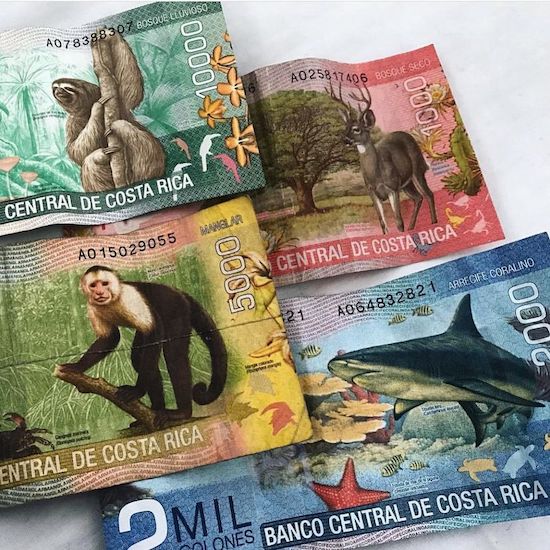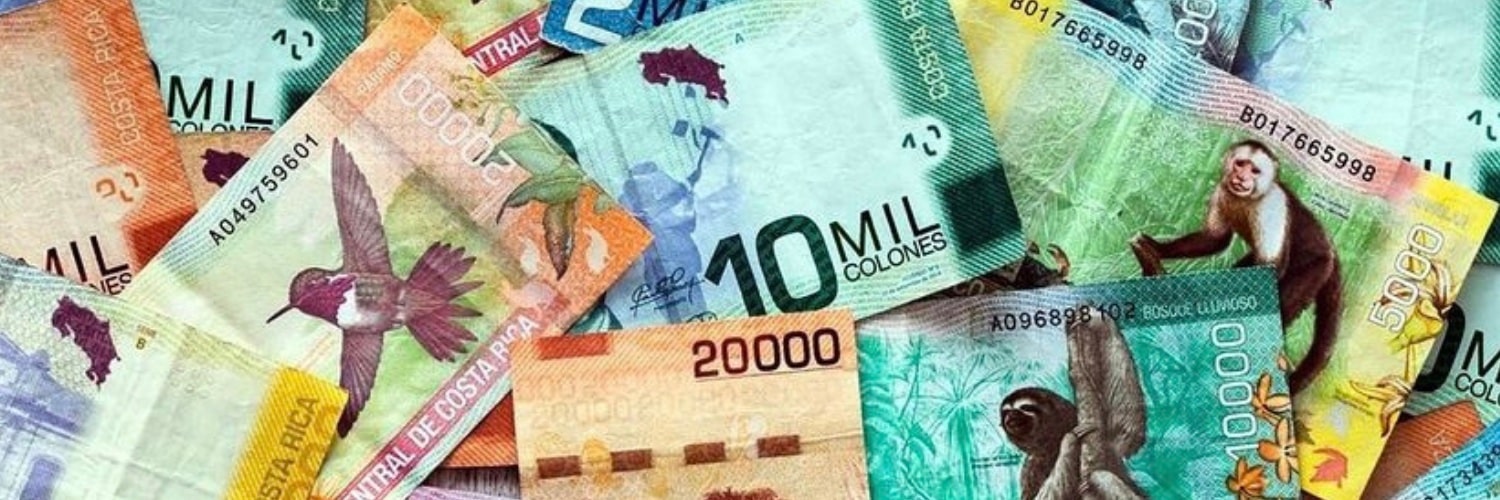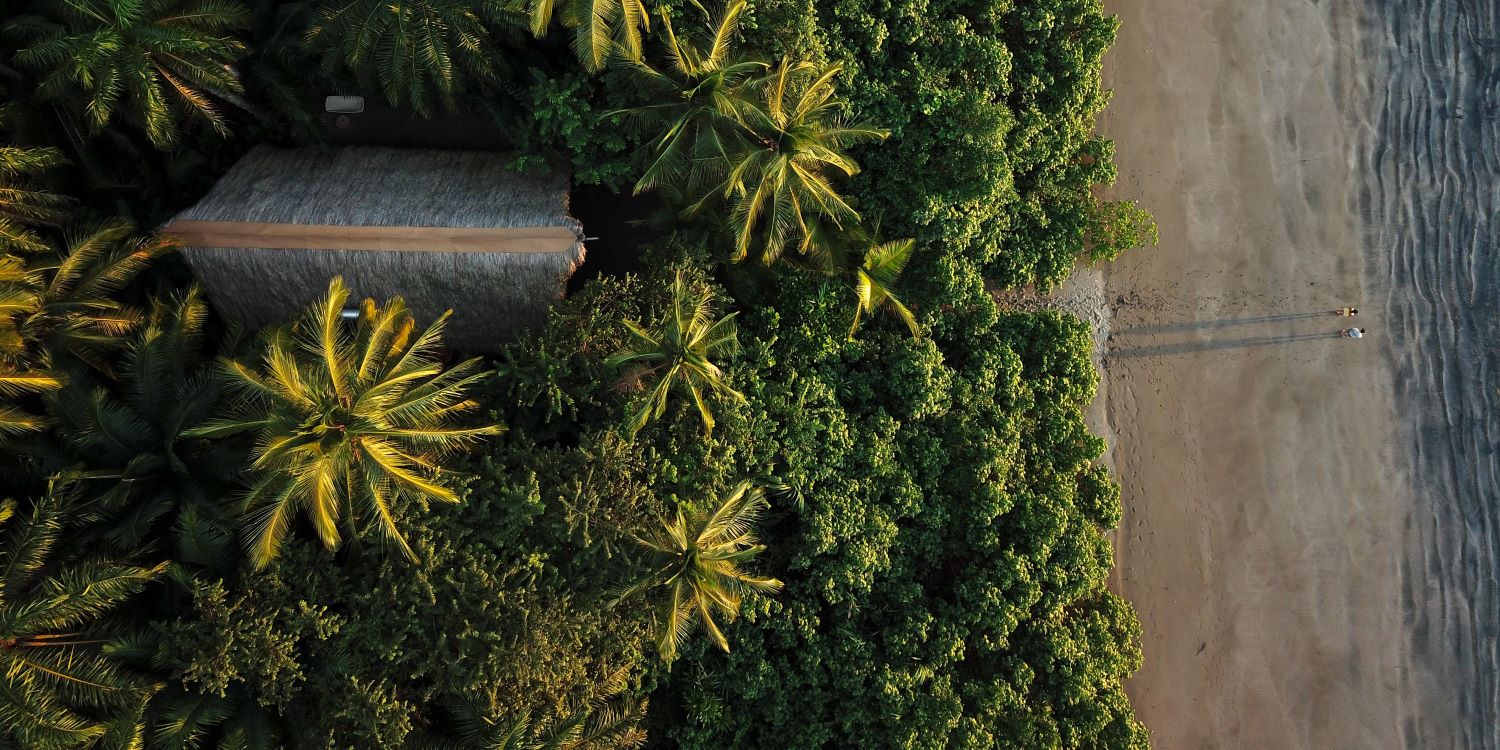When getting ready for a vacation in Costa Rica, there is plenty to consider. Between keeping an eye on your destination’s weather, packing for your various excursions, and making sure your passports are all in order, the process can quickly become overwhelming! However, one of the most important things that you should focus on while preparing for travel? Money. To get by, you’ll need to understand the basics of Costa Rica’s currency, tipping customs, and where and when to exchange money, among other things. Our Costa Rica Experts cover this information with all our travelers before departure. But for those of you doing your research into travel to Costa Rica, here’s a simplified rundown to make your getaway preparations easier.
Colones: The Basics
The official Costa Rican currency is the colón (plural colones). The symbol is ₡.
Costa Rica’s New Colorful Currency Entered the Scene in 2012.

Costa Rica phased out their old bills and put into circulation the following new colorful banknotes inspired by the country’s celebrated wildlife:
- The 1,000-colon banknotes (deer)
- The 2,000-colon banknotes (shark)
- The 5,000-colon banknotes (monkey)
- The 10,000-colon banknotes (sloth)
- The 20,000-colon banknotes (hummingbird)
There was also previously a 50,000-colon morpho butterfly bank note, but it has been taken out of circulation and is no longer accepted.
Money FAQs:
It’s important to have your finances in order before a trip. Between notifying credit cards and tipping, there’s plenty to take care of before you go. Allow us to demystify any confusion surrounding Costa Rican currency. And if you have any more questions, please feel free to ask an Expert well before take-off.
Does Costa Rica take US dollars?
The Costa Rica Colon is preferred, but US dollars are widely accepted. We recommend traveling with small denominations of US dollars for tipping purposes. Generally, bills larger than $20 are not accepted. Even if you use the USD, you will likely receive your change in colones.
Credit card payment is widely accepted, most commonly MasterCard, Visa, and American Express, but the further off-grid you get, the less likely. You’ll want to tell your credit card company that you’ll be in Costa Rica before your trip to ensure your cards work without issue.
If you plan on driving, you will want to have a variety of Costa Rica colones (bills and coins) with you, as there may be toll roads along your route. Your wallet may feel a bit stuffed with all the cards and currencies you’re keeping track of, but having a few different methods of payment on hand is going to save you time and stress.
What is the exchange rate?
At any given time, you can calculate $1 US Dollar (USD) to the Costa Rican Colon (CRC) here, or any other country’s currency for that matter. A quick Google search will also do the trick. As of Feb 20, 2023, we are looking at 1 USD to 559.3417 CRC.
Where can I exchange money in Costa Rica?
We suggest waiting until you get to Costa Rica for the best exchange rate. You can do it upon arrival at the airport, which is usually the simplest option as you can exchange your cash before you even step foot outside. You can also make your exchange at some high-end hotels, but they may not have the most favorable rate. Money exchange is also provided at most banks and ATMs, although ATMs may be unreliable. Look into fees your bank may charge as they tend to be higher for international transactions. Please note: to exchange money in Costa Rica, you’ll need to bring your passport.
Should I tip?
Tipping is really up to you based on your overall experience, the level of service, and your budget. Nobody should expect a tip, but it is a thoughtful way to reward someone for their experience, knowledge, and help. Restaurant bills include 10% gratuities, but it is perfectly acceptable to leave extra for good service. However, it is worth noting that tipping in Costa Rica is not considered a requirement the way it is in the United States.
How much is the tax in Costa Rica?
A 13% value-added tax (VAT) is charged on professional services in Costa Rica. There’s an additional 10% service tax added to meals as a tip for the staff. Hotels are subject to a 13% sales tax on room charges.
Just Some Fun Currency Facts
- The new bills are also of different sizes, which enables those without sight to differentiate between bills.
- The banknotes change colors.
- The Colon is named for a famous historical figure. The name Colon comes from Christopher Columbus, Cristobal Colon in Spanish.
- The bills were once made of cotton and plastic, but have since switched to entirely plastic for security reasons.
- The colones feature a national figurehead on one side and an animal on the other. Personally, I’m here for the animals. 😉
With money matters aside, are you ready to visit Costa Rica? We’ll help you plan it. Start here to plan your trip or browse our customizable vacation packages!





